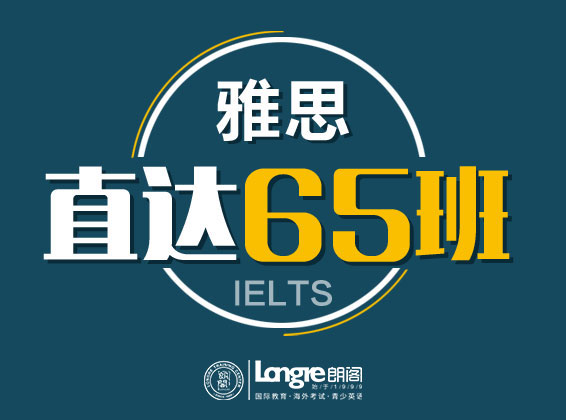|
雅思口语考试中,物品类是常考的话题之一,目的在于考察考生对于客观物品的描述能力,因为在生活中难免碰到一些需要向别人描述某些物品的情况。要想把一个物品描述清楚,需要考生从外观、内部、功能等方面着手,循序渐进,介绍完整。当然在雅思口语考试里,除了描述物品,还需考生结合自身经验和实际来使物品本身丰富,使整个回答流畅自然。在众多物品类考题中,对于艺术品的描述是经久不衰的考题之一。多年来,艺术品一直作为物品类常考题存在着,考察学生对艺术品的了解。其实在西方,艺术是人们生活的一部分,参观艺术展览是普通人周末的休闲方式之一。不管是在欧洲、美洲还是澳洲,与别人谈论艺术品是能很好开启人们之间谈话的话题之一。通过这些,足以看出西方人对于艺术的热爱。所以在雅思考试中出现描述一件艺术品的题变得理所当然。然而,对于平时不太常接触艺术品的中国学生来说这无疑是一件比较困难的任务。所以在这里,朗阁雅思培训口语组的老师就为考生们准备了手工艺品的全攻略。
首先大家要了解,在当下的常考题目中,基本上有两种关于艺术品的题目,分别是a handicraft和a piece/work of art。这两类物品是有区别的,a handicraft是指手工艺品,而另一个就是普通的、任何一个艺术品。综合两题共同点,考生只需准备一个手工艺品就可以了,因为手工艺品属于艺术品的范畴。考生要知道如何给自己减负,即能把共同准备的题合在一起,用通用的内容来回答多个题。老师建议大家尽量选择一些有中国特色的物品,这样不仅能吸引考官的注意引起他的兴趣,也能避免一些潜在的错误,因为描述一件西方艺术品是比较冒险的行为,一旦你不十分了解你描述的物品,就极易给出错误信息,而这些错误信息对于考官来说恰恰是他比较了解的。这样一来,考官认为你是抄袭或说谎给你低分也是情有可原的。所以,合理地选择自己比较了解且有特色的手工艺品是首要任务。下面给出一些有特色的手工艺品供大家参考:kite 风筝,paper cuts/cutting 剪纸,embroidery 刺绣,porcelain 瓷器,jade carving 玉雕,root carving 根雕,seal carving 印章雕刻,ice carving 冰雕,clay figurines 泥人,lacquer ware 漆器,potted landscape 盆景,batik 蜡染,the shadow show 皮影戏,fancy lantern 彩灯,Tri-coloured Tang 唐三彩,Cloisonné 景泰蓝,paper fan 纸扇,Chinese calligraphy 中国书法,Chinese painting 国画,Snuff bottle with interior painting 鼻烟壶内画等。以上这些都是极具中国特色的手工艺品,考生们可以从中选择任何一种来描述,但老师要提醒大家的是,如果大家并不十分了解某个东西而你又十分想说,尽量还是选择放弃。毕竟口语考试话题千千万万,如果要描述不了解的物品会给你的准备工作平添许多麻烦,所以考生尽量选择熟悉好描述的物品,比如风筝、剪纸、泥人和纸扇等,既简单又具特色。
接下来,老师就以剪纸为例,做一个示范,建议考生们仔细阅读,学习一下介绍物品的切入点和顺序以及如何与自身经验相结合。
Describe a work of art you have seen.
You should say:
when you (first) saw this work of art
where you saw it
what it looked like
and explain your feelings about this work of art when you saw it.
Well, let me introduce you a work of art that’s most impressive to me, and that’s called paper cutting. I first got to know it in my art class in secondary school. When my art teacher Mr Du walked into class with several red paper works in diverse shapes in his hands, I was certainly attracted. I’d say that class was the one I most devoted ever since we had art classes. From that class, I learned that paper cutting is a traditional art in China which has been making its way along the route of the long history of paper. The kind of art went after the invention of paper in Han Dynasty. Usually it’s done simply with a piece of red paper and a pair of scissors. First fold up several times, like three or four times, before you have to draw outlines of your desired patterns on the paper. Then cut along those lines and unfold it, it’s done! But unfortunately it’s not that easy as it looks like so I’ve tried pretty hard to make it well done. Finally, when I got my first paper cutting done, which is a fish, I felt a huge sense of achievement deep in my heart. Conventionally, fish stands for richness and surplus in Chinese culture so people like to put it up on the wall, or windows or doors to wish a peaceful, happy and fortunate life for the coming new year during Chinese Spring Festival. Sometime after I got to know the paper cutting, I once again saw this kind of art when I was back to my granny’s house during Spring Festival. I saw the paper as a Chinese character Fu pasted up-side-down on her bedroom’s door, which caused my curiosity. So my granny told me Fu means blessing and happiness, people paste it up-side-down to implicate blessing and happiness being coming, coz in Chinese, the words ‘up-side-down’and ‘coming’are actually pronounced the same. It’s pretty interesting to find that and I think that's what makes me fall in love with this kind of art increasing deeply.
此范文流畅自然地描述了物品并循序渐进地介绍出了作者的自身经验和感受,让听者有兴趣、耐心地听下去。所以,考生可学习这种描述方法,从而使自己的回答自然流畅。艺术品的题未来依然是常考题之一,所以考生要提早下功夫选择一件作品,做好充分的准备。 (责任编辑:admin) |







